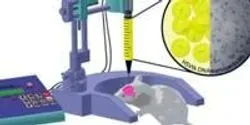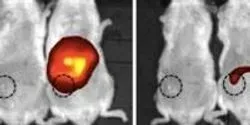Nanoparticles

North Carolina State University researchers have developed an effective and environmentally benign method to combat bacteria by engineering nanoscale particles that add the antimicrobial potency of silver to a core of lignin, a ubiquitous substance found in all plant cells. The findings introduce ideas for better, greener and safer nanotechnology and could lead to enhanced efficiency of antimicrobial products used in agriculture and personal care.

Researchers funded by the National Institute of Biomedical Imaging and Bioengineering have designed a nanoparticle transport system for gene delivery that destroys deadly brain gliomas in a rat model, significantly extending the lives of the treated animals. The nanoparticles are filled with genes for an enzyme that converts a prodrug called ganciclovir into a potent destroyer of the glioma cells.

Scientists alter attractive and repulsive forces between DNA-linked particles to make dynamic, phase-shifting forms of nanomaterials.

Collaboration with Lund University uses modified University of Oregon spectroscopy equipment to study 'maze' of connections in photoactive quantum dots.














